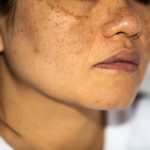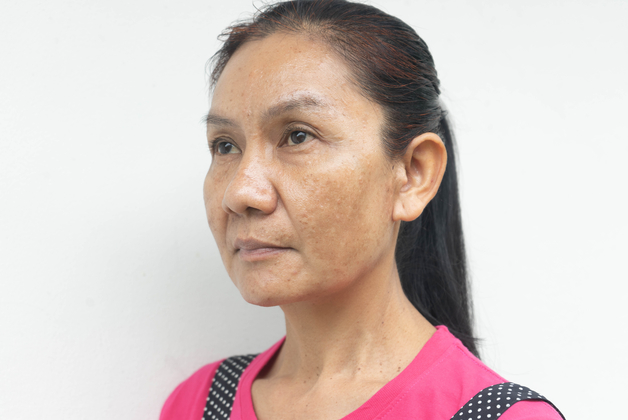Hyperpigmentation Complexity: Challenges in Addressing Multifaceted Causes
Research

Hyperpigmentation is a common skin concern with complex causes affecting individuals of all skin types. The discolorations, darkening of the skin, or uneven skin tone is mostly associated with the overproduction of melanin.

Hyperpigmentation is a persistent skin concern with complex causes affecting individuals of all skin types and all ethnicities. The discolorations, darkening of the skin, or uneven skin tone is mostly associated with the overproduction of melanin, a natural pigment responsible for skin color. Though many exogenous and endogenous factors can trigger melanocytes, specialized cells of the epidermis to accelerate melanogenesis, the most prevalent reasons include:
-Sunlight/exposure to ultraviolet (UV) radiation
-Hormonal changes
-Skin irritation/wounds/inflammation/acne
-Medications
-Aging/Elevated oxidative stress
-Genetic predisposition
Irrespective of the underlying cause for hyperpigmentation, understanding the intricacies of the melanogenic pathway to modulate melanin synthesis and distribution remains a vital insight to treating hyperpigmentation.
So, let’s dive further into the complexities which limit achieving optimal outcomes in treating hyperpigmentation.
Lack of Multidirectional Approach to Regulating Melanogenesis: A Complex Cascade
Since melanogenesis is a multi-step complex biological process, its modulation necessitates targeting multiple steps involving key enzymes or other vital biomolecules. Though it is a highly intricate network, the effective inhibitory strategies comprise regulating:

-The α-MSH (α-melanocyte-stimulating hormone) signaling pathway
-The catalytic activity of Tyrosinase, a key enzyme in the melanogenesis pathway
-Melanosome transfer and distribution
-The Wnt signaling pathway
Thus, to create comprehensive solutions that effectively address hyperpigmentation, the chosen actives should work in synergy to target diverse aspects of the Melanogenic pathway.
A Dearth of Differentiated Formulations for Various Hyperpigmentation Types
Hyperpigmentation manifests in different forms, each with its unique underlying causes and mechanisms. The three major types include:
-Age Spots: (Sunspots, Solar lentigines): Usually occur due to sun exposure, and aging. These appear brown because of the lipofuscin bodies of the basal cells. Actives that protect against UV exposure, directly target melanin production, and enhance cell turnover are essential for treating age spots.
-Melasma: It is a complex form characterized by dark patches on the face, often triggered by hormonal fluctuations, pregnancy, or sun exposure. Actives that target both melanin production and hormonal factors are essential for positive outcomes.
-Post-Inflammatory Hyperpigmentation (PIH): The rise in melanocyte activity occurs as a result of skin inflammation, such as acne, eczema, or skin injuries. Actives that reduce melanin production and possess anti-inflammatory/soothing properties are critical for treating PIH.
Furthermore, hyperpigmentation may involve a combination of different types or multiple underlying causes. Thus, developing formulations that combine synergistic actives to address the complexity of these conditions is essential for effective treatment.
Poor Stability or Shelf-life of Actives
Even when choosing the right combination of actives, the challenge of ensuring the stability and shelf life of these actives throughout the product's lifespan is a major concern. Most of the potent actives like Ascorbic acid, Resveratrol, Retinoids, etc. are susceptible to oxidation and degradation. Exposure to air, light, pH, or temperature variations can lead to chemical reactions that break down them into less effective or even inactive forms. Thus, to achieve the desired outcomes, formulation expertise plays a crucial role in maintaining the stability and efficacy of chosen actives.
High Risk of Rebound Hyperpigmentation
Rebound Hyperpigmentation is another commonly prevalent concern, wherein an individual experiences an increase in pigmentation after abruptly discontinuing the use of topical treatments, especially those like Hydroquinone which targets tyrosinase activity by competitive inhibition. It can be attributed to the body’s attempt to make up for the temporary inhibition of tyrosinase during the therapy period. Thus, a more comprehensive approach wherein the synergistic ingredients regulate melanin production apart from the competitive inhibition mode can be effective in reducing the risk of rebound pigmentation.
In essence, the future's canvas of hyperpigmentation resolution is painted with innovative formulations. A canvas where the brushstrokes of safety and efficacy converge harmoniously, preserving user well-being while magnifying the potential for optimal outcomes. As we journey forward, this intersection will illuminate the path to radiant and healthy skin, embodying a true blend of science and care.
Skin Sensitization Risks or Other Adverse Effects
In the pursuit of skin perfection, the delicate equilibrium between effectiveness and safety is a perpetual tightrope walk. Actives like hydroquinone, retinoids, and beta-hydroxy acids, while promising, come with the caveat of potential sensitization, skin irritation, and adverse reactions. Often, the quest for efficacy leads to a risky game of escalating concentrations, intensifying associated hazards. However, a silver lining exists through the meticulous selection of actives that boast proven non-sensitizing attributes, paired with optimal dosages. This careful formulation approach is pivotal in taming the adverse repercussions, all the while enhancing the user experience.